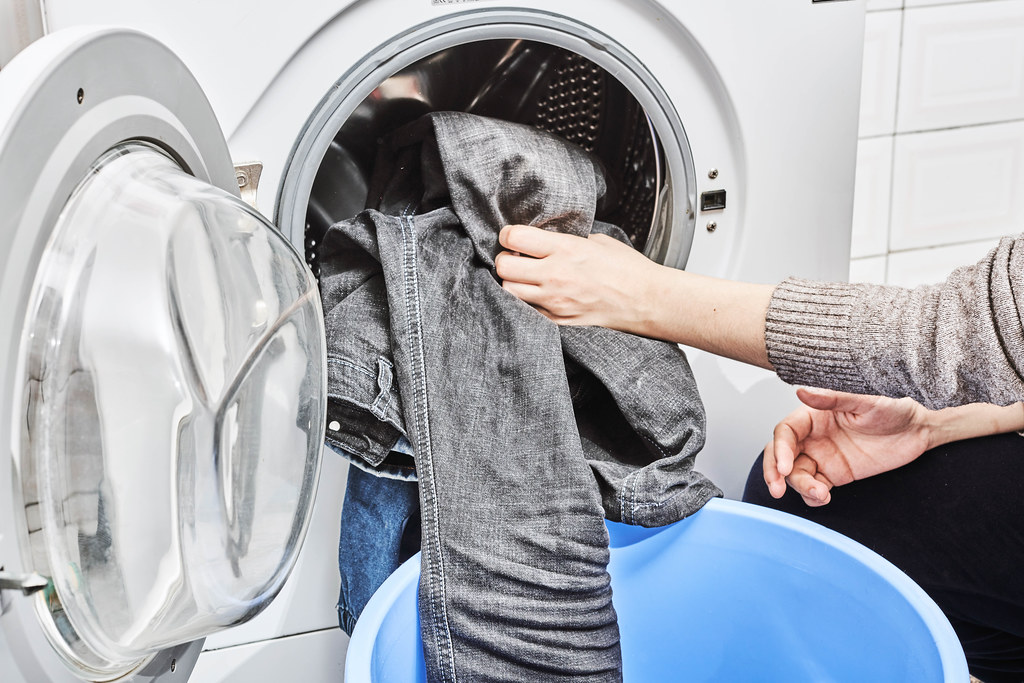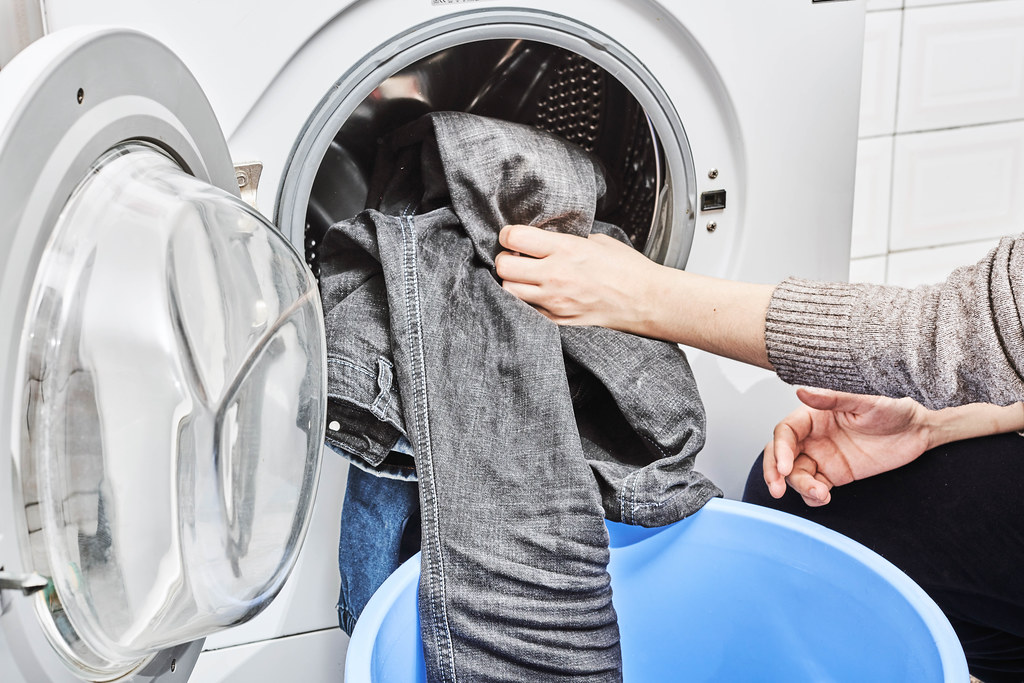Introduction
What is a front load washing machine?
A front load washing machine is a type of washing machine that has a door on the front side for loading and unloading clothes. Unlike top load washing machines, which have a lid on the top, front load washing machines have a horizontal drum that rotates to wash the clothes. This design allows for larger capacity and more efficient cleaning, as the clothes are lifted and dropped repeatedly during the wash cycle. Front load washing machines are known for their energy efficiency and water-saving features, making them a popular choice for many households.
Advantages of front load washing machines
Front load washing machines offer several advantages over top load machines. Firstly, they are more energy efficient, using less water and electricity to operate. This not only helps to reduce utility bills but also contributes to a greener environment. Additionally, front load machines are known for their superior cleaning performance. The tumbling action of the drum and the ability to adjust the wash cycles ensure a thorough and gentle cleaning of clothes. Furthermore, front load machines have larger capacities, allowing for bigger loads and reducing the number of wash cycles required. Lastly, front load machines are designed to be space-saving, making them ideal for smaller laundry rooms or apartments. Overall, front load washing machines provide convenience, efficiency, and effectiveness in cleaning clothes.
Common issues with front load washing machines
Front load washing machines are known for their efficiency and effectiveness in cleaning clothes. However, like any other appliance, they can experience common issues that may require repair. One common issue with front load washing machines is the buildup of mold and mildew. The design of these machines, with their airtight seals, can create a moist environment that is perfect for the growth of mold and mildew. This can result in unpleasant odors and even affect the cleanliness of the clothes. Another common issue is the formation of leaks. Over time, the rubber gaskets and hoses in front load washing machines can wear out or become damaged, leading to water leakage. These issues can be resolved by regular cleaning and maintenance, as well as timely repairs by professionals.
Understanding the Parts

Door and door seal
The door and door seal of a front load washing machine are crucial components that ensure a watertight seal and prevent leaks. Over time, the door seal may wear out or become damaged, leading to water leakage during the wash cycle. It is important to regularly inspect and clean the door seal to maintain its efficiency. If the door seal is damaged, it should be replaced promptly to prevent further issues. Additionally, it is recommended to check the door hinges and latches for any signs of wear and tear, as these can also contribute to water leakage. By properly maintaining the door and door seal of your front load washing machine, you can ensure its optimal performance and prevent potential water damage.
Drum and drum paddles
The drum and drum paddles are essential components of a front load washing machine. The drum is where the clothes are placed for washing, and it rotates to agitate the clothes and remove dirt and stains. Drum paddles, also known as lifters, are located inside the drum and help move the clothes around during the wash cycle. Over time, the drum paddles can wear out or become damaged, leading to poor washing performance. It is important to regularly check and replace the drum paddles to ensure the washing machine operates efficiently. Additionally, proper maintenance of the drum, such as cleaning it regularly and removing any debris or lint, can help prolong the lifespan of the washing machine.
Detergent dispenser and drawer
The detergent dispenser and drawer of a front load washing machine play a crucial role in ensuring clean and fresh laundry. This component is designed to hold and dispense detergent, fabric softener, and other laundry additives during the wash cycle. It is important to regularly clean and maintain the detergent dispenser and drawer to prevent the buildup of residue and ensure optimal performance. To clean the dispenser, remove it from the machine and wash it with warm soapy water. Make sure to remove any leftover detergent or fabric softener before reinstalling it. Additionally, regularly inspect the dispenser for any signs of damage or clogging and replace it if necessary. Proper maintenance of the detergent dispenser and drawer will help prolong the lifespan of your washing machine and ensure that your clothes are always fresh and clean.
Diagnosing Problems

Leaking water
Leaking water is a common issue that many owners of front load washing machines face. This problem can be caused by a variety of factors, such as a faulty door seal, a clogged drain pipe, or a malfunctioning water inlet valve. When water leaks from a front load washing machine, it not only creates a mess but also poses a risk of damage to the surrounding area. Therefore, it is important to address this issue promptly to prevent further complications.
If you notice water leaking from your front load washing machine, it is recommended to check the door seal for any signs of damage or wear and tear. Additionally, inspect the drain pipe for any blockages and ensure that the water inlet valve is functioning properly. By identifying and resolving the underlying cause of the water leakage, you can ensure the efficient and reliable performance of your front load washing machine.
Not spinning or agitating
When it comes to washing machine front load repair, one common issue that many people face is the machine not spinning or agitating. This can be a frustrating problem as it prevents the clothes from getting properly cleaned. There can be several reasons for this issue, such as a faulty motor, a broken belt, or a malfunctioning control board. It is important to diagnose the exact cause of the problem in order to effectively repair the washing machine. Consulting a professional repair technician is recommended for a thorough inspection and accurate diagnosis.
Strange noises during operation
One common issue that can occur with front load washing machines is strange noises during operation. If you notice your washing machine making unusual sounds such as banging, grinding, or squeaking, it could indicate a problem. These noises can be caused by a variety of issues, such as loose drum bearings, worn-out belts, or objects caught in the drum. It is important to address these strange noises promptly to prevent further damage to your washing machine. It is recommended to consult a professional technician to diagnose and repair the issue.
Repairing Common Issues

Cleaning the door seal
To ensure the optimal performance and longevity of your front load washing machine, it is essential to regularly clean the door seal. Over time, dirt, grime, and detergent residue can accumulate in the seal, leading to unpleasant odors and potential mold growth. To clean the door seal, start by wiping it down with a damp cloth to remove any visible debris. Then, mix a solution of equal parts water and vinegar and use a toothbrush or small brush to scrub the seal thoroughly. Pay close attention to the folds and crevices where dirt may be trapped. After scrubbing, rinse the seal with clean water and dry it thoroughly. By incorporating this simple cleaning routine into your maintenance schedule, you can keep your washing machine door seal in top condition and ensure clean and fresh laundry every time.
Replacing drum paddles
Replacing drum paddles in a front load washing machine is a common repair task that can greatly improve the machine’s performance. Over time, the drum paddles can wear out or become damaged, leading to issues such as clothes not being properly cleaned or the drum not spinning correctly. To replace the drum paddles, start by unplugging the machine and removing the access panel at the back. Locate the old drum paddles and use a screwdriver to remove the screws securing them in place. Carefully pull out the old paddles and insert the new ones, making sure they are securely attached. Finally, reattach the access panel and plug in the machine. With the new drum paddles in place, your front load washing machine will be back to running smoothly and efficiently.
Unclogging the detergent dispenser
Unclogging the detergent dispenser is an essential step in maintaining the efficiency of a front load washing machine. Over time, detergent residue and other debris can build up, causing the dispenser to become clogged. To unclog the dispenser, start by removing it from the machine and rinsing it thoroughly with warm water. Use a small brush or toothbrush to scrub away any stubborn residue. If the clog persists, soak the dispenser in a mixture of warm water and vinegar for about 30 minutes to dissolve any remaining buildup. After soaking, rinse the dispenser again and reattach it to the washing machine. Regularly cleaning and unclogging the detergent dispenser will ensure that your front load washing machine continues to operate effectively and prolong its lifespan.
Preventive Maintenance
Regular cleaning and maintenance
Regular cleaning and maintenance are essential for keeping your front load washing machine in optimal condition. Over time, dirt, grime, and detergent residue can build up inside the machine, leading to unpleasant odors and decreased performance. To prevent this, it is recommended to clean the drum, door seal, and detergent dispenser regularly. You can use a mild detergent or a mixture of vinegar and water to remove any buildup. Additionally, it is important to check and clean the filter regularly to ensure proper drainage and prevent clogs. By incorporating these simple cleaning and maintenance practices into your routine, you can extend the lifespan of your front load washing machine and enjoy clean and fresh laundry every time.
Checking and cleaning the filter
When it comes to checking and cleaning the filter of your front load washing machine, it is important to follow the manufacturer’s instructions. Start by locating the filter, which is typically located at the bottom of the machine behind a small access panel. Remove the panel and carefully remove the filter. Check for any debris or blockages and clean the filter thoroughly using warm water and a mild detergent if necessary. Once the filter is clean, reinsert it back into the machine and secure the access panel. Regularly checking and cleaning the filter will help ensure that your washing machine continues to operate efficiently and effectively.
Using the right detergent and amount
Using the right detergent and amount is crucial for maintaining the performance and longevity of your front load washing machine. Front load washers require high-efficiency (HE) detergents that are specially formulated for these machines. Using regular detergents can cause excessive sudsing and lead to issues like foul odors and mold growth. Additionally, it is important to use the correct amount of detergent as using too much can leave behind residue and cause the machine to become less efficient. Follow the manufacturer’s instructions for the recommended amount of detergent based on the load size and soil level. By using the right detergent and amount, you can ensure that your front load washing machine operates effectively and keeps your clothes clean and fresh.
Conclusion

Summary of key points
The front load washing machine is a popular choice among consumers due to its efficiency and performance. However, like any other appliance, it may require repair and maintenance over time. In this article, we will provide a summary of key points to consider when repairing a front load washing machine. We will discuss common issues that may arise, such as leaks, noise, and error codes, and provide troubleshooting tips. Additionally, we will highlight the importance of regular cleaning and maintenance to prolong the lifespan of the machine. By following these key points, you can ensure that your front load washing machine remains in optimal condition and continues to provide you with clean and fresh laundry.
Importance of professional repair
When it comes to repairing a front load washing machine, it is essential to rely on professional repair services. Professional repair technicians have the expertise and knowledge to diagnose and fix any issues with your washing machine efficiently. They are equipped with the necessary tools and equipment to ensure a thorough and accurate repair. By opting for professional repair, you can avoid further damage to your washing machine and extend its lifespan. Additionally, professional repair services often come with a warranty, providing you with peace of mind knowing that your appliance is in good hands. So, when faced with a front load washing machine repair, trust the professionals for a reliable and long-lasting solution.
Tips for prolonging the lifespan of your washing machine
To prolong the lifespan of your washing machine, there are several tips you can follow. Firstly, make sure to clean the lint filter regularly to prevent clogs and improve performance. Additionally, avoid overloading the machine as this can put strain on the motor and other components. It is also important to use the appropriate amount of detergent and avoid using too much, as excessive suds can damage the machine. Lastly, consider scheduling regular maintenance checks and inspections to identify and address any potential issues before they become major problems. By following these tips, you can ensure that your washing machine stays in optimal condition and lasts for years to come.
Getting high quality professional help in repairing Washing Machines nowadays is quite difficult, I have decided to standardize the procedures in order to provide the client with the highest quality of work that would exceed the expectations if not just match it.
Click Here to get in touch with us
If you have any questions: Email us
Thank you for voting for us as the Best Washing Machine Repair company in UAE
If you are looking for Tools to use, These are our recommendations

I am an Engineer who is very interested in building a platform that ensures highest standards of quality to be maintained in all forms of maintenanc services and the unification of them in a seemless way.































